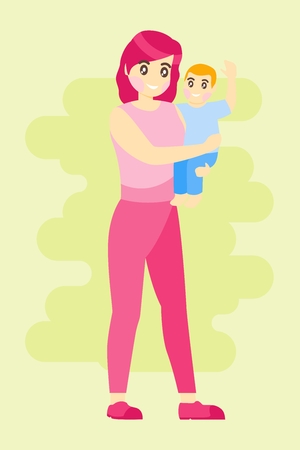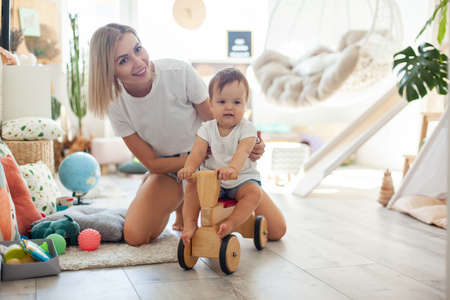Understanding Toddler Emotions
Early childhood is a time of incredible growth, especially when it comes to emotions. Toddlers are just beginning to explore the world around them, and with this exploration comes a whirlwind of feelings—joy, frustration, excitement, anger, and everything in between. These “big feelings” are completely normal and are actually an essential part of growing up. At this stage, toddlers may not yet have the words or skills to explain how they feel, which can sometimes lead to meltdowns or unexpected behaviors. It’s important for parents and caregivers to understand that emotional outbursts are not a sign of bad behavior, but rather a natural part of your child’s development. By recognizing that your toddler’s emotions are real and valid, you’re taking the first step toward helping them express their feelings in healthy ways.
2. Recognizing Emotional Triggers
Understanding what sparks strong emotions in your toddler is a key step toward helping them express feelings in a healthy way. Every child is unique, but there are some common scenarios, environments, and transitions that often make toddlers feel overwhelmed or upset. By learning to spot these emotional triggers early, you can better support your child before their feelings escalate into meltdowns or tantrums.
Common Emotional Triggers for Toddlers
| Trigger | Possible Scenarios | How It Might Show Up |
|---|---|---|
| Transitions | Leaving the playground, bedtime routines, switching activities | Crying, resistance, clinginess |
| Sensory Overload | Loud places (parties, malls), crowded spaces, bright lights | Covering ears, irritability, withdrawal |
| Separation from Caregivers | Drop-offs at daycare or preschool, babysitter arriving | Tears, refusing to let go, tantrums |
| Hunger or Fatigue | Missed snacks/meals, skipped naps, late bedtimes | Mood swings, whining, loss of patience |
| Frustration with Communication | Struggling to express needs or wants verbally | Screaming, hitting, throwing objects |
| Change in Routine | New sibling arrival, moving homes, travel disruptions | Anxiety, regression in behaviors, clinginess |
Spotting Patterns and Preparing Ahead
If you notice your toddler tends to react strongly in certain situations—like after a long day out or when you leave for work—take note. Keeping a journal of when and where emotional outbursts happen can help you identify patterns over time. Once you know which environments and transitions are hardest for your child, you can plan ahead by offering extra comfort and using calming strategies during those moments.
Recognizing triggers is not about avoiding every difficult situation but about understanding your toddler’s perspective. When you anticipate what might overwhelm your little one, you’re better equipped to guide them through big feelings with empathy and patience.

3. Creating a Safe Space for Emotional Expression
Building a supportive environment at home is essential for helping your toddler express their emotions in a healthy way. Children need to feel safe and understood before they can share how they feel. Start by letting your child know that all emotions are normal—even big ones like anger, sadness, or frustration. Avoid judging or minimizing their feelings; instead, acknowledge them with phrases like, “I see you’re upset,” or “It’s okay to feel sad sometimes.” Consistency matters: respond calmly to emotional outbursts and model respectful communication, showing your toddler that it’s safe to talk about feelings without fear of punishment or embarrassment. Create routines where your child can regularly check in about their day and emotions—maybe during bedtime or while sharing a snack together. When toddlers trust that their feelings will be met with patience and empathy, they become more comfortable opening up, which lays the foundation for healthy emotional development.
4. Teaching Emotion Words and Coping Strategies
Helping your toddler identify and express their feelings starts with teaching them emotion words and simple coping strategies. When children can label what they’re experiencing, it’s easier for them to communicate their needs—and for you to support them. Here are some practical ways to get started:
Introduce Emotion Vocabulary
Use everyday moments to point out and name emotions. For example, if your child is frustrated because a block tower fell over, you might say, “I see you’re feeling upset because your blocks crashed.” Repeating emotion words like happy, sad, mad, scared, or excited helps toddlers build an emotional vocabulary.
Model Healthy Expression
Show your toddler how to express emotions in a positive way. For example, if you spill something and feel annoyed, say, “I’m feeling frustrated right now, but I’ll take a deep breath and clean it up.” Modeling this behavior teaches them that everyone has big feelings and healthy ways to handle them.
Teach Simple Coping Strategies
Toddlers aren’t born knowing how to manage tough emotions. Teaching age-appropriate coping skills can help them feel more in control. Here are a few techniques that work well for young children:
Coping Strategy |
How to Teach It |
|---|---|
| Deep Breathing | Encourage your child to take “bubble breaths”—inhale through the nose and blow out slowly as if blowing bubbles. |
| Comfort Object | Allow your toddler to hold a favorite stuffed animal or blanket when upset for security and comfort. |
| Counting | Help your child count slowly to five or ten when they start to feel overwhelmed. |
| Name the Feeling | Prompt your child to say, “I feel…” and finish the sentence with an emotion word. |
| Ask for a Hug | Remind your toddler that it’s okay to ask for hugs or cuddles when they need extra support. |
Practice these strategies regularly—not just during meltdowns. The more familiar they become, the easier it will be for your child to use them independently. Remember, patience is key! Toddlers are learning every day, and your support makes all the difference in helping them express emotions in a healthy way.
5. Modeling Healthy Emotional Behavior
Children learn a great deal about emotions by watching the adults in their lives. As a parent or caregiver, your reactions and coping strategies serve as a powerful example for your toddler. When you openly express your feelings—whether it’s happiness, frustration, or sadness—you show your child that emotions are natural and manageable. For instance, if you’re upset after a stressful day, saying something like, “I’m feeling a little frustrated right now, so I’m going to take some deep breaths,” helps your toddler see that it’s okay to have big feelings and that there are healthy ways to deal with them.
It’s important to use age-appropriate language and behaviors. Avoid hiding all negative emotions; instead, label your feelings and explain what you’re doing to cope. This could be taking a short walk, practicing deep breathing, or talking things out with a friend or family member. By demonstrating these positive coping skills, you’re teaching your toddler valuable tools for managing their own emotions later on.
Remember, toddlers are very observant—even when we think they’re not paying attention! Consistently modeling calm and constructive responses, especially during challenging moments, sends the message that everyone experiences ups and downs and that it’s okay to ask for help when needed. Over time, your child will begin to mirror these healthy emotional habits in their own unique way.
6. Encouraging Communication Through Play
Imaginative play, story time, and creative activities are powerful tools that can help your toddler express emotions in a healthy and age-appropriate way. When children engage in pretend play—like acting out stories with dolls, playing “house,” or using animal figures—they naturally process and communicate their feelings. For example, a child may have a stuffed bear feel sad or angry, which opens the door for you to ask gentle questions about what’s going on with the bear and, by extension, your child’s own emotions.
The Power of Books
Reading together is another wonderful opportunity to explore emotions. Choose books that feature characters dealing with big feelings like anger, sadness, or excitement. Pause during reading to ask your toddler how the character might be feeling or what they would do in that situation. This builds emotional vocabulary and normalizes talking about feelings in everyday life.
Creative Activities for Emotional Expression
Arts and crafts give toddlers a nonverbal outlet for their emotions. Drawing pictures of how they feel, molding shapes out of playdough, or painting with bold colors are all ways little ones can express themselves when words are hard to find. Afterward, gently talk with your child about their artwork: “Tell me about this picture! How did you feel when you made it?”
Making Playtime Safe for Sharing
Most importantly, create a safe space during play where all feelings are welcome—happy, mad, silly, or sad. Show acceptance and curiosity rather than judgment. By weaving imaginative play, books, and creativity into your daily routine, you empower your toddler to share what’s in their heart and mind, setting the foundation for strong emotional health as they grow.
7. Seeking Support When Needed
While its natural for toddlers to experience big emotions as they grow and learn, sometimes you might notice signs that your child is struggling more than usual. As a parent or caregiver, it’s important to trust your instincts when it comes to your child’s emotional well-being. If your toddler seems persistently sad, anxious, withdrawn, or has frequent intense outbursts that don’t improve with your support and guidance, it may be time to reach out for help.
Recognizing When to Ask for Help
No one knows your child better than you do. If you notice behaviors that concern you—like difficulty calming down, trouble connecting with others, or significant changes in sleeping or eating patterns—consider discussing these observations with your pediatrician. Remember, seeking support doesn’t mean you’ve done anything wrong; rather, it shows you care deeply about your child’s mental health and development.
How Pediatricians and Specialists Can Help
Pediatricians are trained to address concerns about emotional and behavioral development in young children. They can help determine whether what your toddler is experiencing is typical or if it may be helpful to connect with a child development specialist, such as a child psychologist or therapist. Early intervention can make a meaningful difference in helping your little one learn healthy ways to express their emotions.
Creating a Team for Your Child’s Well-Being
You are not alone on this journey. In the United States, there are many resources available for families—including early childhood programs, local parenting groups, and mental health professionals who specialize in working with young children. Don’t hesitate to lean on these supports when needed. Prioritizing your toddler’s emotional health now lays the foundation for lifelong resilience and well-being.


